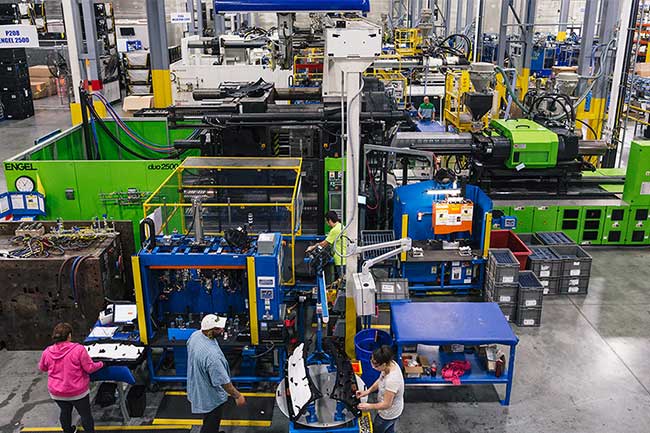As an important equipment in industrial manufacturing, injection molding machines have attracted much attention.Export agentAs a service company, we often face the following questions: How are injection molding machines classified in the customs coding system? And what procedures and regulations should we follow when acting as an agent to export such important equipment? This article aims to provide a comprehensive guide on the export of injection molding machines.

Definition and classification of customs codes for injection molding machines
An injection molding machine is a machine used to manufacture plastic products. Through the injection molding process, the plastic raw material is heated and quickly injected into the mold, and the product is formed by cooling. This equipment is used in many industries such as automobiles, home appliances, electronics, and medical care. According to the customs coding system for international trade, injection molding machines are generally classified as "plastic or rubber processing machinery". The specific customs code may vary depending on the model and function. Usually, the customs code for this type of equipment is under the HS Code 8477 section.
The process of exporting injection molding machines
As a common industrial production equipment, the export process of injection molding machines includes several key steps. From signing the contract to tax refund processing, every link is crucial.Export agentAs a service company, our responsibility is to ensure the smooth progress of the entire export process. Below, we discuss in detail the process of exporting injection molding machines.
1. Signing an international sales contract
1. Contracts between clients and foreign clients:The client usually signs a contract for the sale of goods directly with the foreign buyer. In this case, the terms and conditions of the contract are negotiated between the client and the foreign buyer.
2. Zongdaifu as the seller:In some cases, the OEM contracts as a seller. In this model, the OEM's main responsibility is to process payments, while the customer is responsible for the procurement and production of the goods.
2. Signing of domestic procurement contracts
1. Contract between the client and the domestic supplier:The client needs to sign a purchase contract with a domestic supplier (such as an injection molding machine manufacturer). This step involves specific goods specifications, quantity, price and delivery date.
2. As the buyer:In this model, the integrated agency service is involved in the procurement process, responsible for signing procurement contracts with domestic suppliers and handling subsequent customs declaration andExport tax refundMatters.
3. Remittance Process
Foreign customers remit payment (usually in US dollars) to the account of the Zongdaifu. The Zongdaifu is then responsible for reporting and remittance to the bank so that the payment can be converted into RMB.
IV. Remittance
After the agency converts the remittance into RMB, it will transfer the funds to the domestic factory account designated by the client to pay for the production cost of the goods.
5. Production and Invoice
The domestic factory produces the injection molding machine according to the purchase contract and issues a value-added tax invoice to the Zongdaifu after production is completed.
6. Shipping Arrangement
1. Shipping details and packaging information:The client needs to provide the shipping details and packaging information to the agency.
2. Logistics appointment:The comprehensive agency service is responsible for booking logistics and arranging the transportation of goods from the factory to the port or the customs designated yard.
VII. Commodity Inspection and Transportation
1. Commodity inspection:For goods that require legal inspection, such as injection molding machines, domestic factories need to cooperate with logistics companies and integrated service agencies to arrange inspections in advance.
2. Packing and transportation:The logistics company packs the goods according to the booking letter of the comprehensive agency service and transports them back to the port or the customs designated yard.
8. Export declaration and bill of lading
1. Customs declaration documents:The comprehensive agency service is responsible for the export customs declaration documents and conducts electronic entrustment.
2. Shipment:After the goods are released by customs, the logistics company is responsible for loading the goods and issuing the bill of lading to the logistics company.
IX. Tax Refund Application and Processing
1. Tax refund application:After uploading the customs information, the comprehensive agency service applies for export tax rebates to the national tax authorities.
2. Tax refund transfer:Zongdaifu promises to transfer the tax refund to the customer within 3 working days after receiving the tax refund.
10. Settlement and Agency Fees
After completing all the processes, the agency service will deduct the agency service fee and other expenses and transfer the remaining tax refund to the account designated by the client.


 Follow customer service WeChat
Follow customer service WeChat